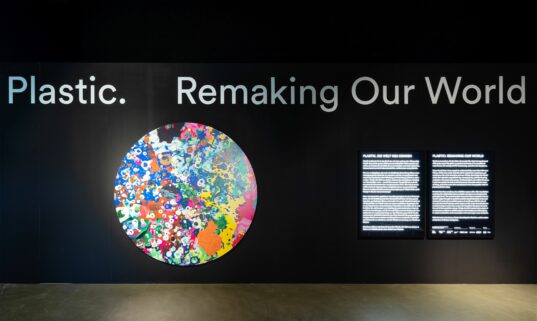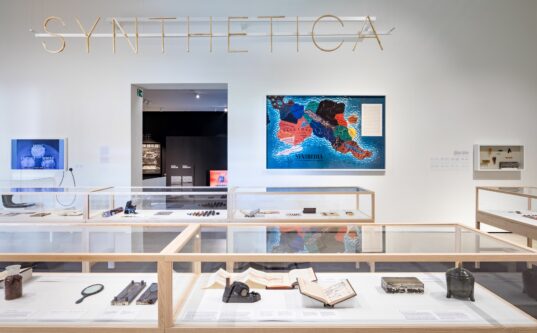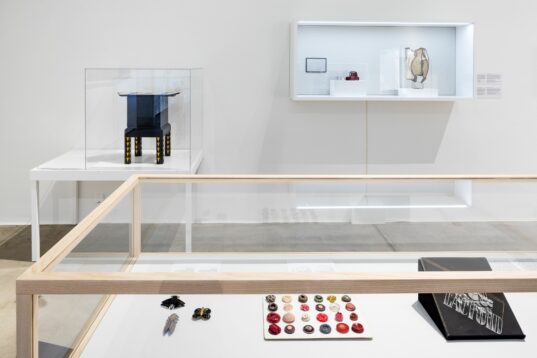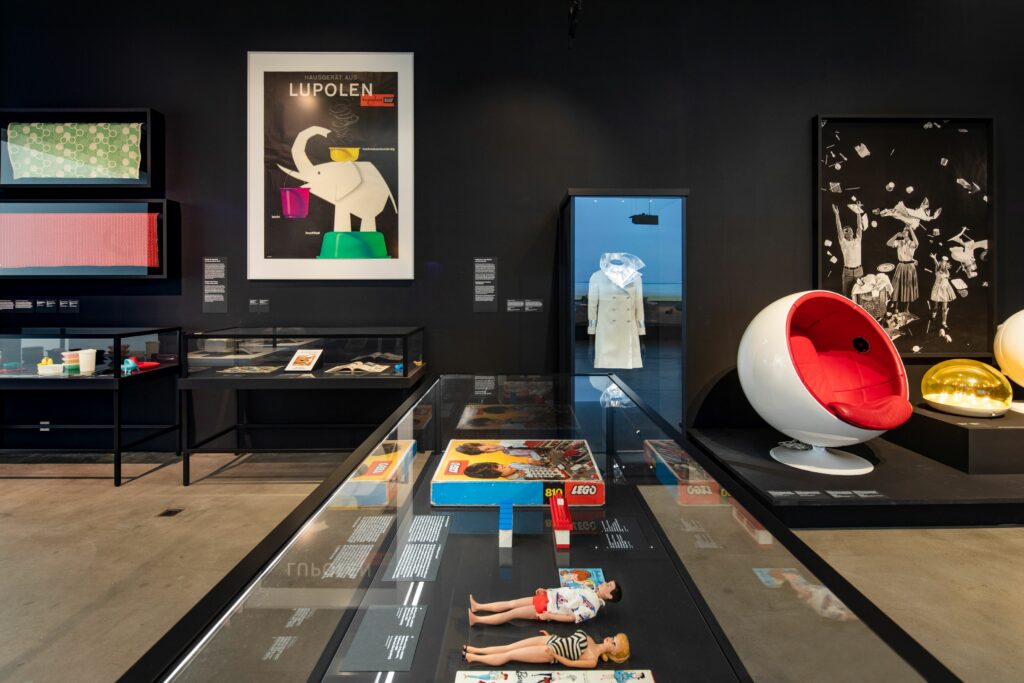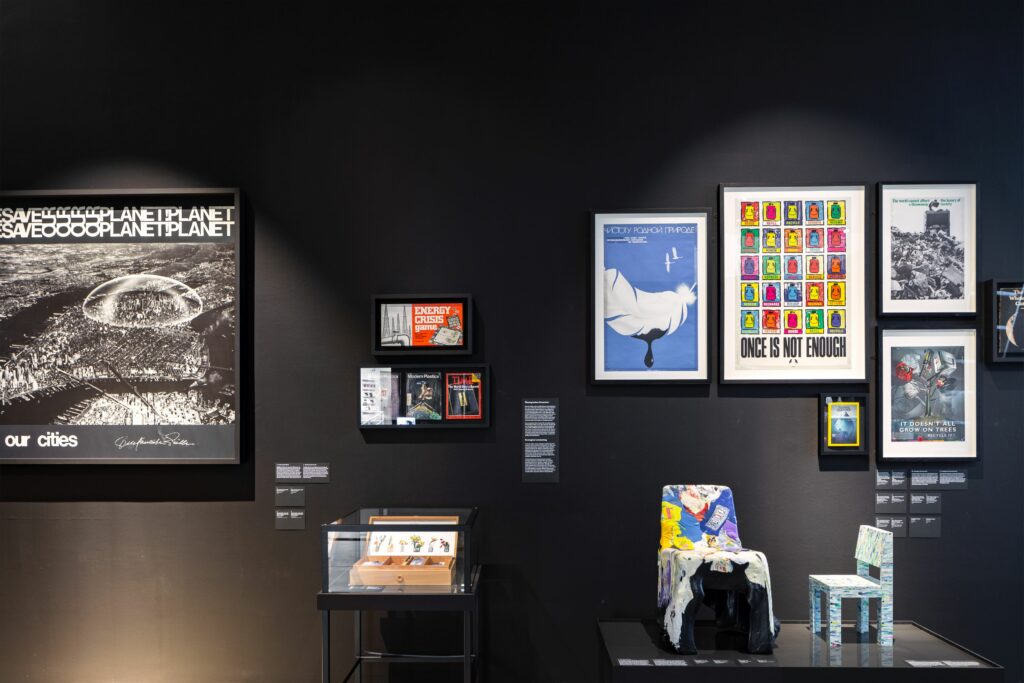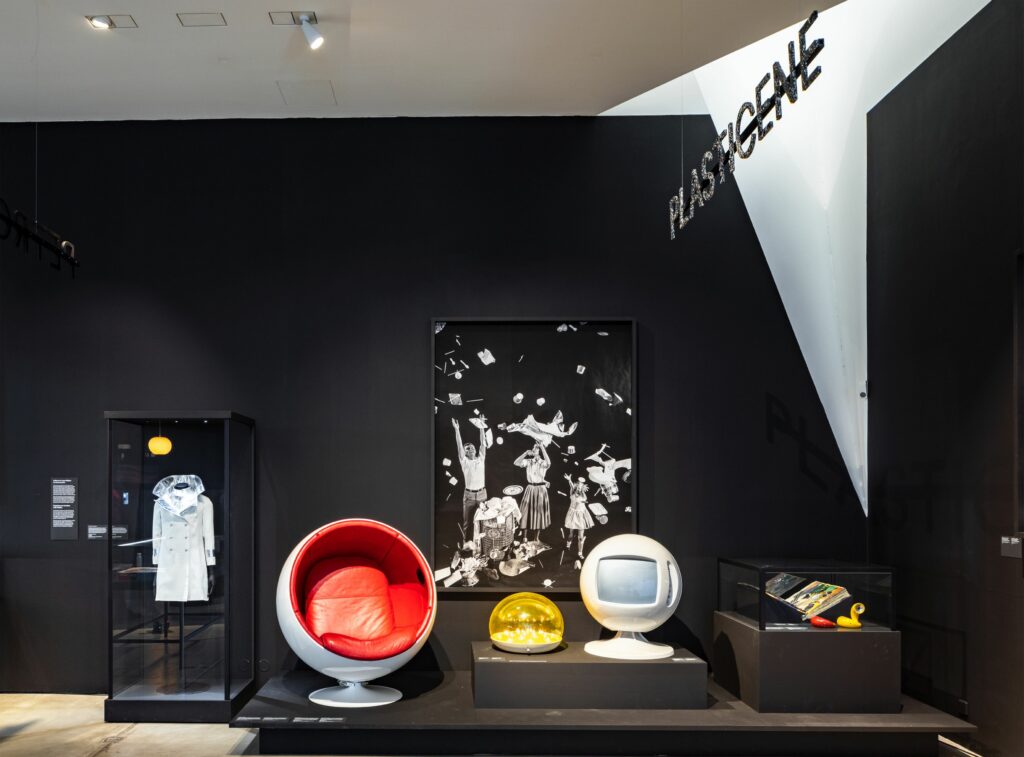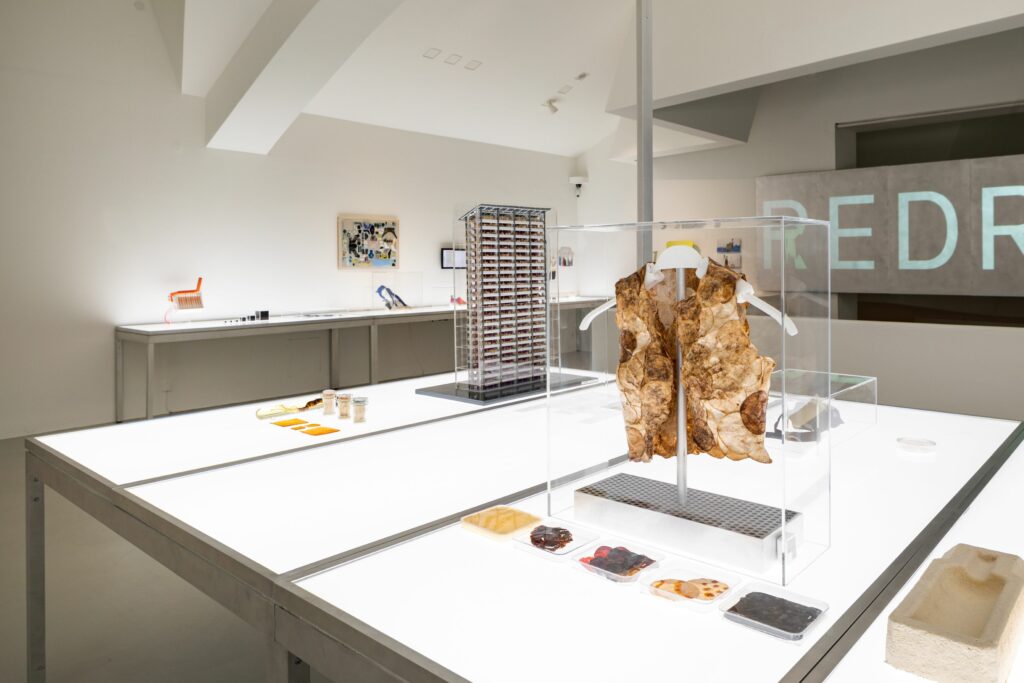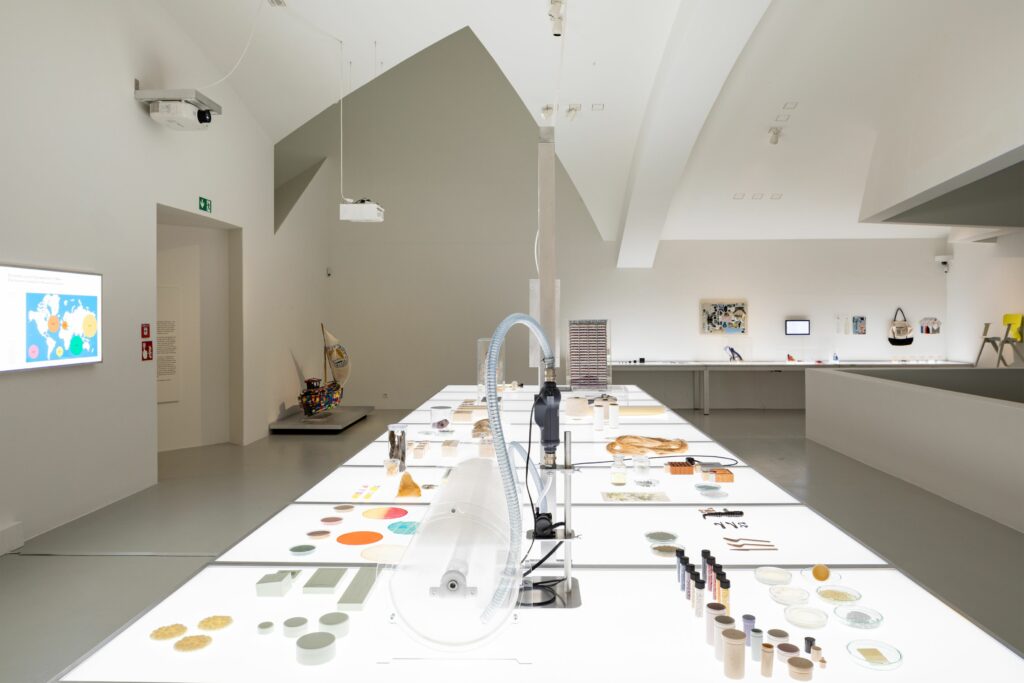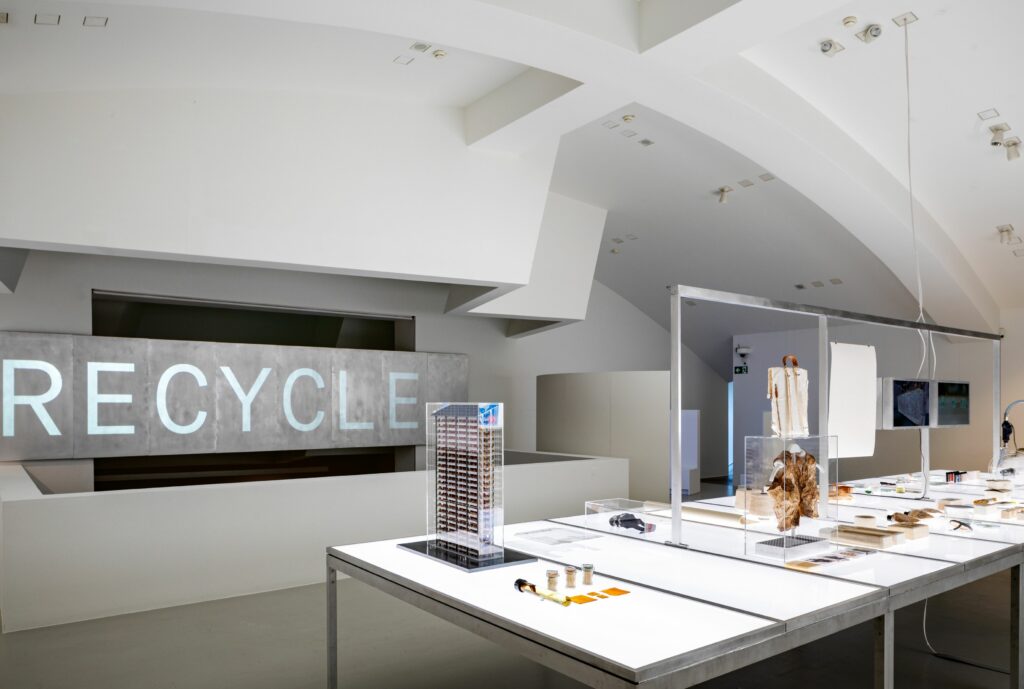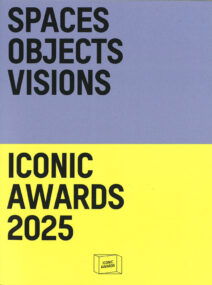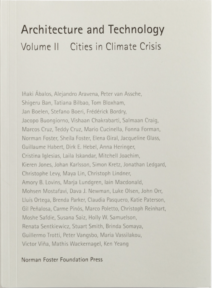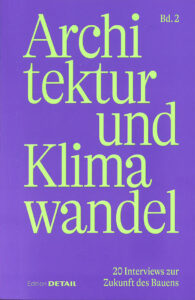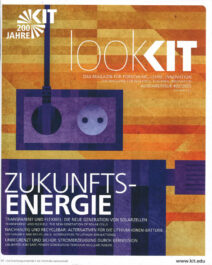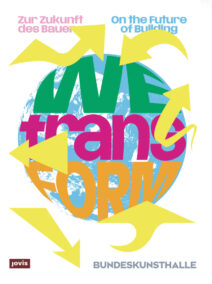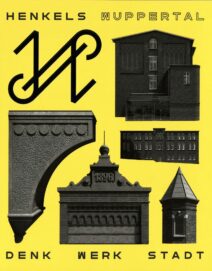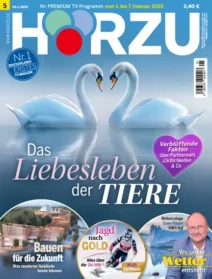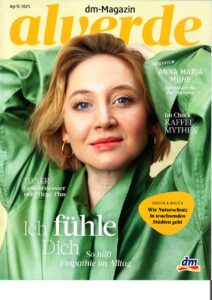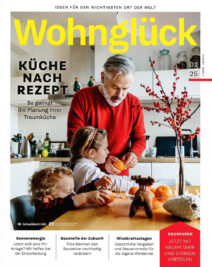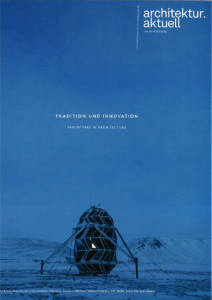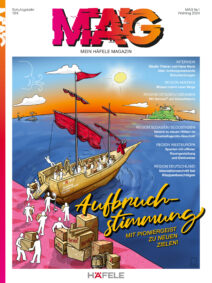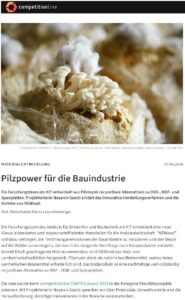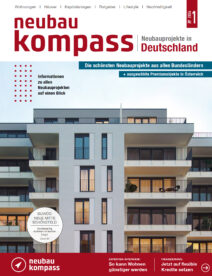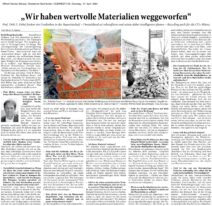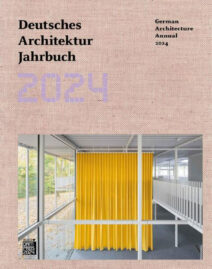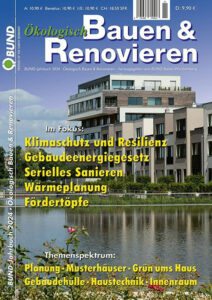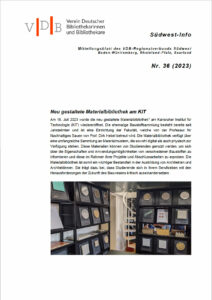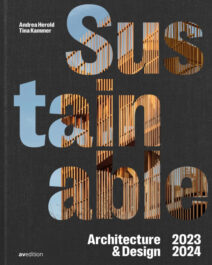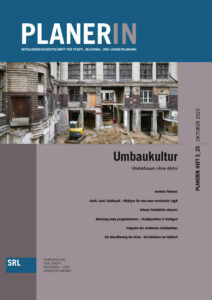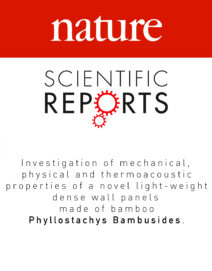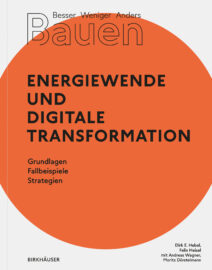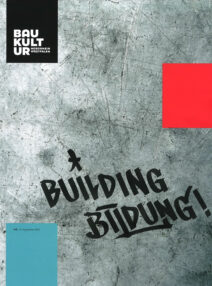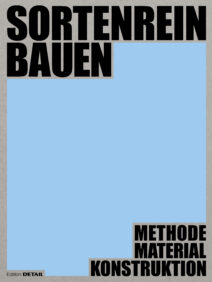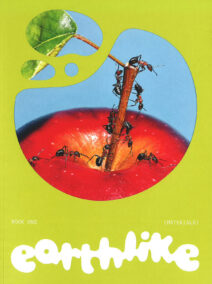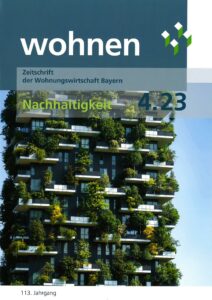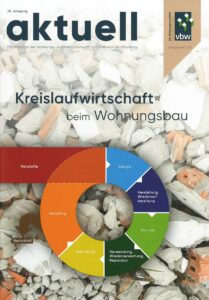Opening of the Vitra Exhibition “Plastic: Remaking Our World”
An exhibition by the Vitra Design Museum, V&A Dundee and maat, Lisbon
The Vitra Design Museum in Weil am Rhein presents the exhibition ‘Plastic: Remaking our World’ as an exploration of the history and future of the controversial material. Plastics have symbolized a world of carefree consumerism and revolutionary innovation, opening the doors for designers and architects for decades. Of course today, the dramatic consequences of the plastic boom have become so obvious that the material has lost its utopian connotation.
The exhibition begins with a large-scale video installation spotlighting the conflicts linked to the production and use of plastic. Timeless images of unspoilt nature are juxtaposed with film documents from one hundred years of plastic industry that convey the ambiguous fascination of increasingly fast-paced automated production at rapidly diminishing costs. The formation of fossil resources such as coal and oil took more than two hundred million years, while the synthetic materials made from them needed little more than a century to become a problem of planetary scale.
The second part of the exhibition describes the evolution and the shifting perceptions of plastics from their beginnings in the mid-nineteenth century to their global omnipresence today. The first plastic materials were plant- or animal-based: for centuries, horn and tortoiseshell were used to create drinking vessels and to embellish cutlery. In 1907, Leo Baekeland invented the first plastic made of purely synthetic components and named it Bakelite. It was hailed as the material of infinite uses. Being nonconductive, Bakelite was soon used for light switches, wall sockets, or radio sets and played a central role in the electrification of everyday life.
While early plastics were often developed by independent inventors and tinkerers, from the 1920s onwards the expanding petrochemical industry took a leading role. This marked the beginning of an era of »petromodernity«. When industrial design emerged as a profession of its own in the 1930s, its proponents were quick to embrace the possibilities of the new materials. Also Architects began to discover plastics as a building material and in 1957 Monsanto installed the all-plastic »House of the Future« at Disneyland.
A few years later, a growing fascination with space flight shifted the focus to plastic’s utopian potential, which was reflected in futurist shapes and new interior design concepts. In the 1960s, based on the notion of convenience and fuelled by the packaging industry, the idea of single-use plastics was introduced and a new throwaway culture began to spread. The oil crisis in 1973 meant lower supplies and higher prices for the resource from which most plastics were made, but it had little long-term effect on the plastic boom. While global plastic production soon picked up again, strategies for reducing plastic waste were slow to emerge.
Today, plastics are globally omnipresent and an intricate part of our lives. Like no other, the human health sector exemplifies the plastic paradox – its positive, sometimes lifesaving qualities as well as its negative, even life-threatening impacts. The issues arising from the plastic boom have etched themselves in our collective consciousness: from microplastic in the soil, in the oceans, and in our bodies to mountains of packaging waste that are often disposed of or burnt – with immense ecological consequences on a global scale.
How can we overcome the global plastic waste crisis? And what role can design – alongside industry, consumers, and politics – play in the process? These are some fundamental questions addressed in the final part of the exhibition. In recent years, many scientists and designers have started exploring materials that are based on renewable rather than fossil resources and often referred to as bioplastics.
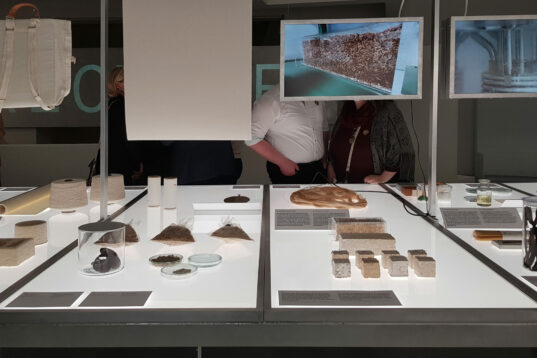
The Professorship of Sustainable Construction of the KIT Department of Architecture was asked to exhibit their ongoing research of building materials made from mycelium. Therefore the team prepared the different steps of growth of a mycelium brick to show biological alternatives for the building sector.
As a whole, the exhibition »Plastic: Remaking Our World« offers a critical and differentiated reassessment of plastic in today’s world. It aims to address the bigger picture of plastic and its complex role in our world: by analysing how we came to be so dependent on it, by reassessing where the use of plastic is essential and where it can be reduced or replaced, and by reimagining possible futures for this contested material.
The Opening Talk and the Vernissage of the exhibition took place on the 25th March 2022. It will be shown in the Vitra Design Museum until 4th September 2022 and then move to the V&A Dundee London and the maat in Lisbon. (Text: Vitra Design Museum)
